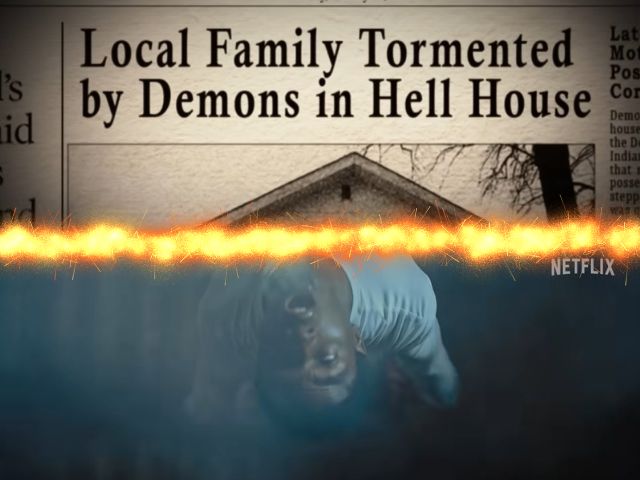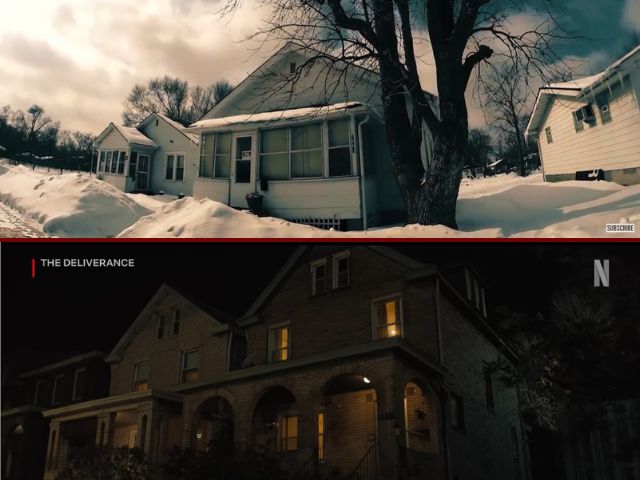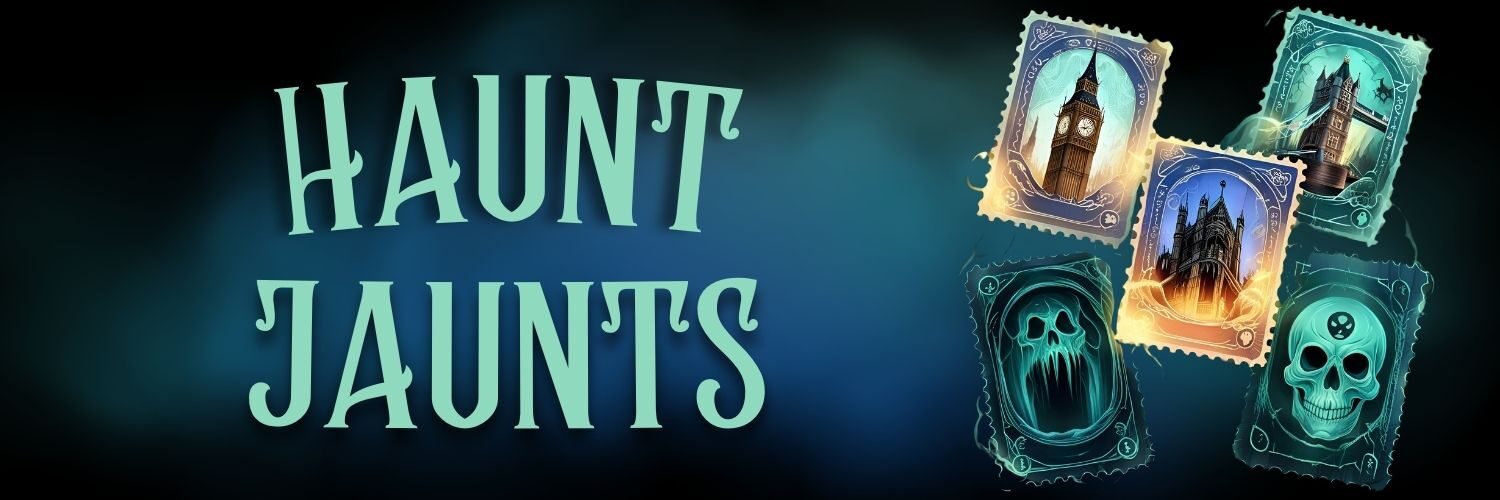
“The Deliverance may become one of the best horror movies on Netflix in 2024,” Screen Rant proclaimed. Why? One very specific reason: “due to its terrifying use of demonic possession.” Well, that and the fact a true story inspired it, “making it scarier and more unnerving for audiences.”
I think Screen Rant is on to something. The Deliverance very well could follow in the footsteps of other acclaimed horror movies inspired by alleged real-life possessions, like The Exorcist, The Amityville Horror, and The Conjuring. Especially since, also like those films, The Deliverance boasts a star-studded cast. So, yeah. The ingredients exist for a terrifying treat.
But it was the “inspired by true events” part that intrigued me. What case was it? One I was familiar with or something new?
A Variety list of the 22 best movies streaming in August provided the answer:
“Lee Daniels is back in the director’s chair for Netflix’s ‘The Deliverance,’ a new horror-thriller that follows a family living in Indiana who are plagued by supernatural and demonic occurrences that lead them and their community to believe their house is a portal to hell.”
Specifically, it was the “Indiana” and “portal to hell” details that cinched it.
The Demon House Documentary
Latoya Ammons, her three children, and her mother allegedly endured demonic possession in the house that once stood at 3860 Carolina Street in Gary, Indiana, where they lived from 2011-2012.
In 2014, Zak Bagans purchased the house “sight unseen” after the Ghost Adventures star learned of Ammons’ haunted house story. Then he took his crew there and conducted a paranormal investigation. In 2016, he tore down the house. In 2018, he released the Demon House documentary.
Bagans billed it as “the most documented case of demonic possession in US history” for good reason. Ammons and her family weren’t the only witnesses to the paranormal activity plaguing them. In Demon House, Bagans interviewed staff from the Gary Police Department, the Department of Child Services, and a hospital who also saw it. But, curiously, not Ammons because she’d already struck a deal with another production company. (Which ended up going belly up, but another one came along and ended up making The Deliverance.)
A “view at your own risk” warning accompanied the Demon House trailer because Bagans believed the house was cursed. Except, he didn’t think you even necessarily needed to step foot in it for the demons to curse you. The documentary itself carried a similar “viewer beware” warning, which stated:
The following documentary may not be suitable for all audiences. This film shows real people, places and events involving alleged demonic possession. Demonologists believe that demons can attach themselves to you through other people, objects, and electronic devices.
Was it as haunted and cursed as Bagans made it out to be? We’ll never know. (I saw the documentary and was fine, just like everyone else who saw it was.) But the bummer is that no one else will ever get the chance to verify or debunk his claims since the house is gone. However, he did save the stairs, which he displays in his museum.
The Deliverance vs. Demon House: Differences
1. Format
While the same story inspired both, and both are feature-length films, the most obvious difference is the format. Demon House was a documentary about a paranormal investigation after the fact. The Deliverance is a supernatural horror movie about the paranormal events as they unfold.
2. The House
Since the original house was torn down, it obviously wasn’t available to film in. (Would they have, though, even if they could? Or would that have been too creepy?)
But the original was a single-story wooden house. The house in The Deliverance is a two-story brick.

3. Names
Similar to what Netflix did with The Watcher, The Deliverance keeps many of the details from the real-life story but changes certain things, like the names of those involved. For instance, Andra Day’s “Ebony” portrays Latoya Ammons, and Glen Close’s “Alberta” portrays Ammons’ mom, Rosa Campbell.
4. The Grandma
Speaking of the grandma, in a curious casting choice that I’d love to ask Lee Daniels about, he picked Glenn Close. So many of the comments on the trailer expressed excitement to see the talented, Oscar-nominated actor in the film. (Myself included. I mean, come on. “It’s Glenn f–king Close!” to borrow one person’s comment.)
However, how come no one questioned the obvious? Close’s skin color doesn’t match that of the woman her character is based on. Maybe they’re not familiar with the real story? Because for those who are, I imagine this is a question that might come up. (Well, I guess I’m proof of that, aren’t I?)
Not that it should matter. People reported that Day had nothing except praise for the “absolute veteran.” And Close felt the same, saying being part of the movie was “one of the best, most joyous, challenging and humbling experiences of my career.”
Still, I couldn’t help but wonder if phenoms like Pam Grier (who rocked the grandma role in THEM: The Scare), Alfre Woodard, Phylicia Rashad (maybe she had a Gilded Age conflict?), Loretta Devine, or Angela Bassett were offered the part.
I’m sure Lee had his reasons. It’s not like the Oscar winner doesn’t know what he’s doing, after all. Judging from the trailer, Close does what she does best: owns her role. I’m just doing what I do best: being nosy.
I will say it makes me even more curious to see The Deliverance, which opens in theaters on August 16 and starts streaming on Netflix on August 30. What about you?
Check-In
Does the fact The Deliverance is based on a true story up the scare factor for you?
Courtney Mroch is a globe-trotting restless spirit who’s both possessed by wanderlust and the spirit of adventure, and obsessed with true crime, horror, the paranormal, and weird days. Perhaps it has something to do with her genes? She is related to occult royalty, after all. Marie Laveau, the famous Voodoo practitioner of New Orleans, is one of her ancestors. (Yes, really! As explained here.) That could also explain her infatuation with skeletons.
Speaking of mystical, to learn how Courtney channeled her battle with cancer to conjure up this site, check out HJ’s Origin Story.

Yes, movies based on true events definitely up the scare factor for me. I wonder if Bagans tore the house down instead of selling it after his investigation because he truly thought it was a spiritually dangerous place. I mean, if he sold it, even at a discount, he could have recouped some of his money.
I agree with you, Priscilla. There really is something especially scary about the “based on a true story” movies. And I believe Bagans did tear down the house because he felt it was so “spiritually dangerous.” (Perfect way to sum that up!) It’s surprising he didn’t do more with it somehow. I mean, it’s not in the best area so turning it into a museum would’ve been fraught with issues, but surely someone else could’ve bought it. Except maybe that also would pose legal issues somehow. Like someone claims to get hurt by a demon or commits a crime and blames it on the demon and somehow it’s his fault. That kind of thing. Oh. You’re making me think again! Thank you! lol
How come he tore down the house?
Oh shoot, ignore that comment…for some reason, WordPress loads things very slowly sometimes…comments, like buttons, etc.
He said it was to protect others because it was too dangerous. Too much of a magnet for evil or something. (Which never sat well with me.)
LOL! No worries! Trust me. I get it. I have now figured out I can only like comments when I’m signed out. WordPress. Loves to keep things interesting! lol
Loved the Demon House documentary. I have visited Zak’s Haunted Museum and have seen, firsthand, the stairs and dirt under the stairs from the house. Pretty cool. However, I found the movie to be rather boring, poorly acted, and didn’t do the story much justice.
I have to admit, I was psyched to see the trailer for the movie when it was first released, but…I haven’t watched it. For one, because I’ve been away, but I’m just not into the fictionalized versions of a lot of these stories anymore. So I’m glad to hear it doesn’t sound like I’m missing much by not watching. Thanks for saving me some time, Troy!
I kind of contradicted myself in the way I wrote my post. I DID love the documentary, but I found it a tad boring in that it could have been much better and didn’t quite meet my expectations. Have you seen Paraflixxx TV tv station yet? There are quite a few good ghost hunting shows on there. Patti Negri is the executive vice president. BeaconTV is up and coming, as well. Shane Pittman from The Holzer Files is going to have two shows running soon over there. Sounds exciting!
Paraflix has been around for a while hasn’t it, Troy? I did check out the Beacon TV you mentioned recently. It’s nice there are places like that for people to put their shows out there.